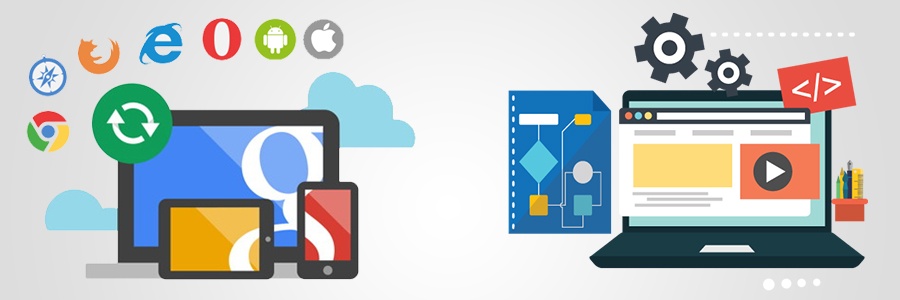The 22 awful DRAWBACKS of a Staging environment

The 22 awful DRAWBACKS of a Staging environment
Considering everything, the first nail in the proverbial casket is the truth that WordPress updates, changes and maintenance can be done so quickly from right within the LIVE platform. The ability to update the platform or practically any plugin is wonderful, however, it likewise indicates that "Cowboy Coding" -- making changes straight on the live website -- is really hassle-free and very tempting. That is, until catastrophe strikes. Migrating modifications directly to production by skipping your staging environment can include some significant losses in the consequences. Are you prepared to accept the losses that may originate from the unknowns? The significant disadvantages of utilizing staging sites are the following arguments.
It’s time to see THE BIG PICTURE!
- 01 - Hosting companies frequently charge for a staging site service. Yes, nothing is FREE.
- 02 - It takes longer to upgrade your site (as you require to evaluate modifications initially).
- 03 - Staging sites might not be precise reproductions of a live website (caching, backup, security is not generally THE SAME on a staging site).
- 04 - Your staging environment is not architecturally representative of your production environment.
- 05 - No Isolated Staging Server. Hosting your staging server in the very same place as production is a significant error that not only brings confusion, but also runs the risk of information leakage and disruption as a whole.
- 06 - Replicating production loads on staging can be exceptionally pricey.
- 07 - In practice, it makes bugs in some cases extremely difficult to reproduce. Sometimes a bug can't be validated on staging as the data set is different. In addition, it's extremely simple to get puzzled.
- 08 - Confusion. This is constantly the greatest danger. It's a pain to get internal users to utilize staging as a real system, knowing that their data can constantly be overridden or forgotten
- 09 - When something is down, clients are onto you like a 911 emergency and you require to provide a quick fix ASAP. In this rush, we typically supply a workaround or even release a minor repair to production immediately to relax the situation, but we forget to deploy that tiny fix in staging, too.
- 10 - Missing a Common Objective. Separate teams are dealing with the same job, a task-focused only towards their objectives, and are ignorant when requested for cooperation.
- 11 - The benefits of pushing directly to production are very clear. Customers get direct access to features, without the time lag of waiting for them to move through several various environments.
ASK US ANYTHING WORDPRESS RELATED: We can offer you confidently, SEVERAL OPTIONS to choose which one suits your needs better.
- 12 - Staging is a vital component for little startups and huge business alike. Think about it like a costly vase that you require to maintain and manage with care. When cleaned up appropriately, it is bound to bring more grace to your production environment. If not, its a starting point doe extra disasters.
- 13 - Staging environment increases the quality and stability of the code but at the expenditure of time and money.
- 14 - Consumer data is not something that you can dummy out. Rather than running tests on empty tables, you require to fill the staging database with as much information as your production database is managing to have a quote of your most current schema capabilities.
- 15 - Running Staging in the 11th Hour. This is a really typical disappointment on management's part. You need to offer your testers adequate time to evaluate the product thoroughly in this environment, otherwise, this is no different than pushing modifications from dev to production.
- 16 - Staging being the closest of all environments to production, it requires constant monitoring, protection and maintenance too.
- 17 - If your production servers are serving requests from everywhere worldwide, so should your staging environment. If you are running an international operation, you will need to test it worldwide with requests that match the use patterns from the very same locations.
- 18 - Nothing is happening in it. The majority of staging environments tend to be empty and uninhabited locations, considering that no one is using them.
- 19 - It doesn't contain genuine information. If you wish to make certain your most current modifications will not break anything, you need to have the very same edge cases that exist in your production.
- 20 - A big benefit to an engineering company is a reduction in the problem and cost of keeping separate datasets for staging. The tedium squandered in verifying issues in various environments vanishes, along with the time spent keeping them in sync.
- 21 - You need to monitor the staging behaviour. Monitoring your staging is important for 2 factors: first, you require to know when things fail. Second, monitoring tools and agents belong to the architectural similarity you want to accomplish.
- 22 - You only keep it running for a few minutes. Spinning up your staging servers 60 minutes prior to you deploy to production is not going to cut it. Some issues take a while to brew (memory leaks, data corruption, external unforeseen acts and so on) and leaving your staging environment running for a substantial quantity of time is important to recognize these issues.
We can offer you confidently, SEVERAL OPTIONS to choose which one suits your needs better.
Do you have any other questions regarding Staging environments? Leave your thoughts in the comments below!
We’re passionate about helping you grow and make your impact
Continue being informed
Monthly vulnerability reports about WordPress and WooCommerce, plugins, themes.
Weekly inspiration, news and occasional with hand-picked deals. Unsubscribe anytime.

